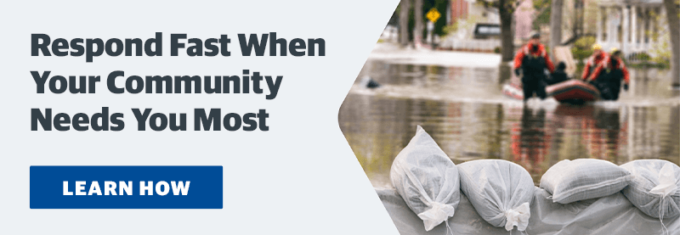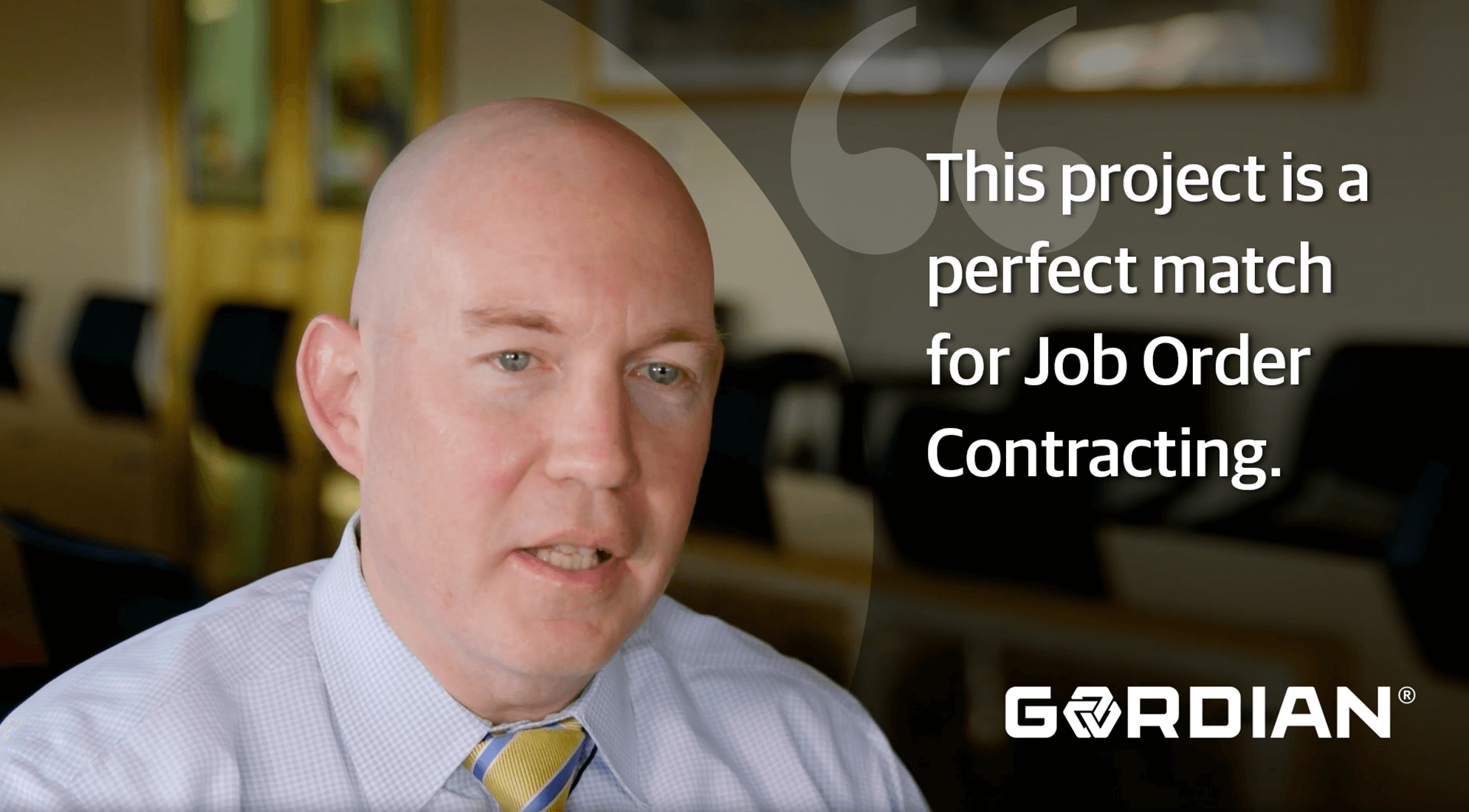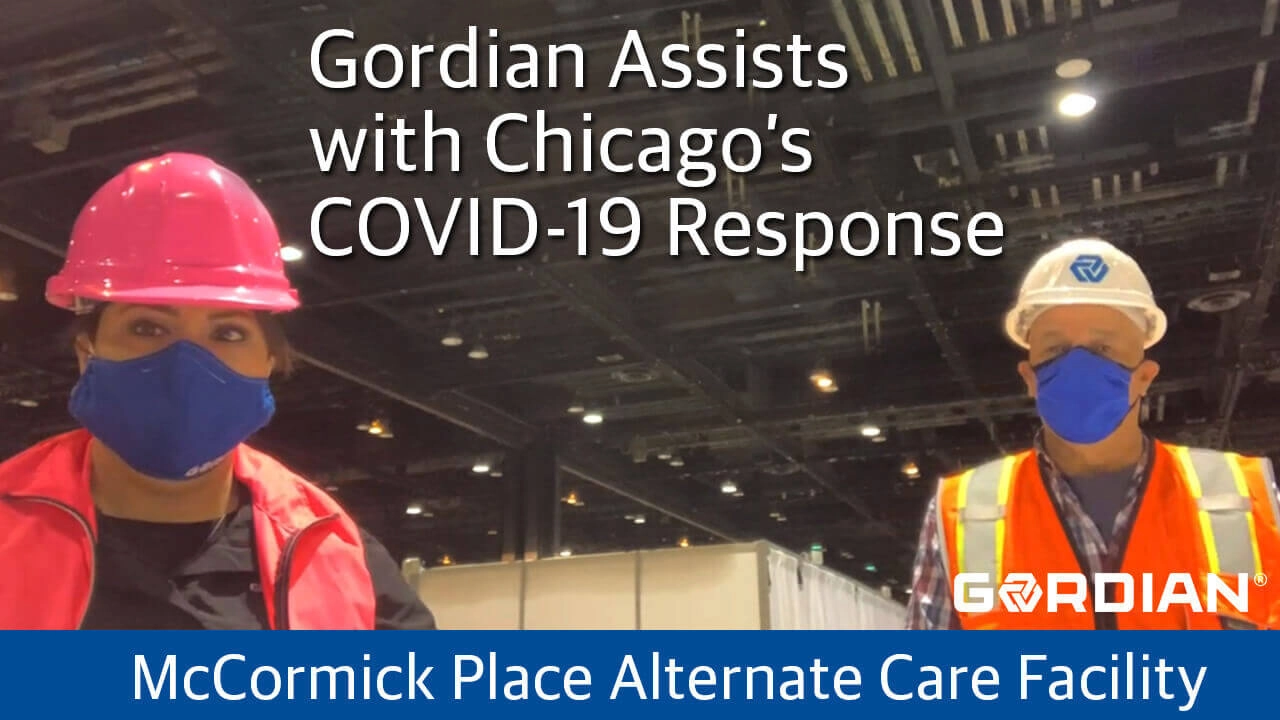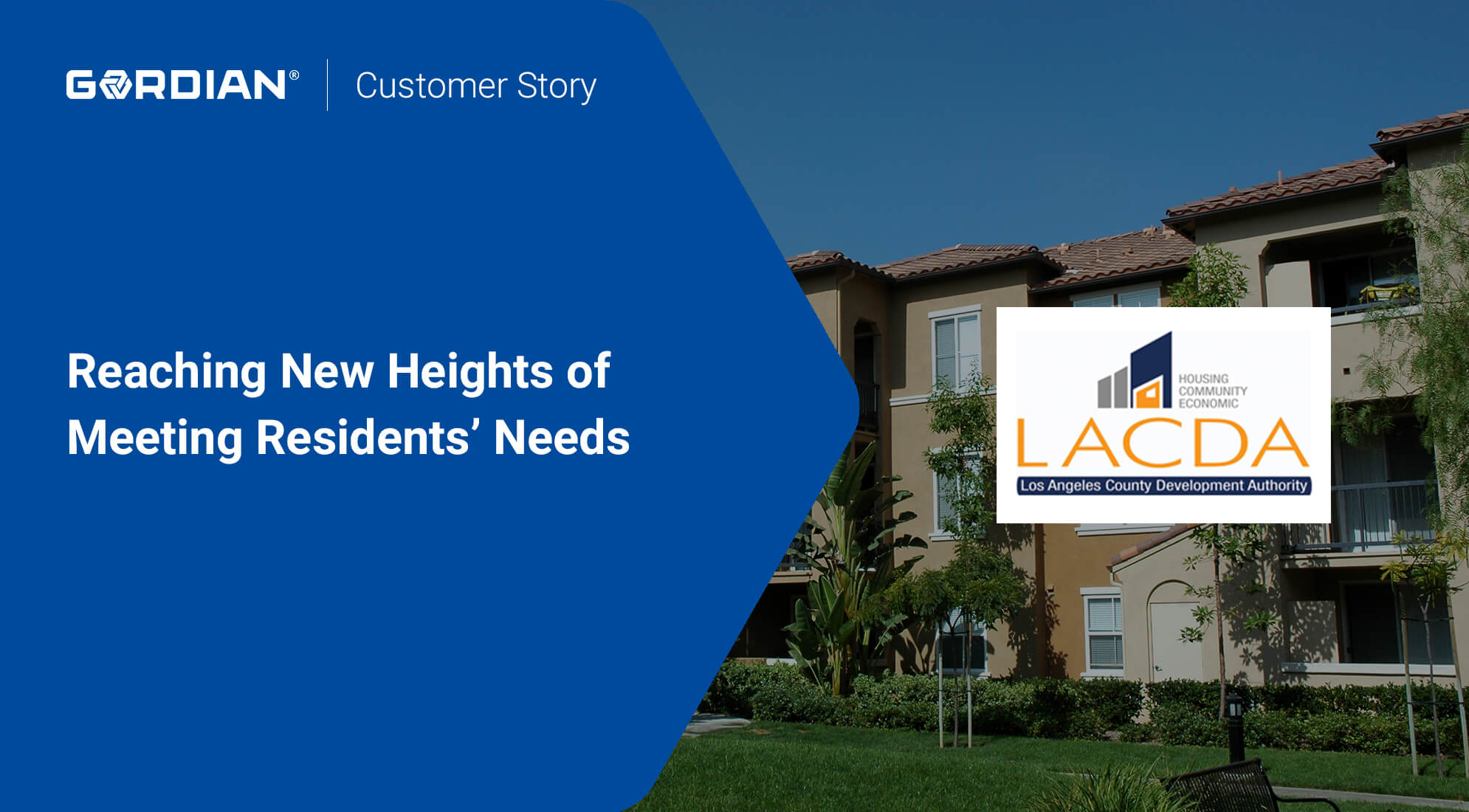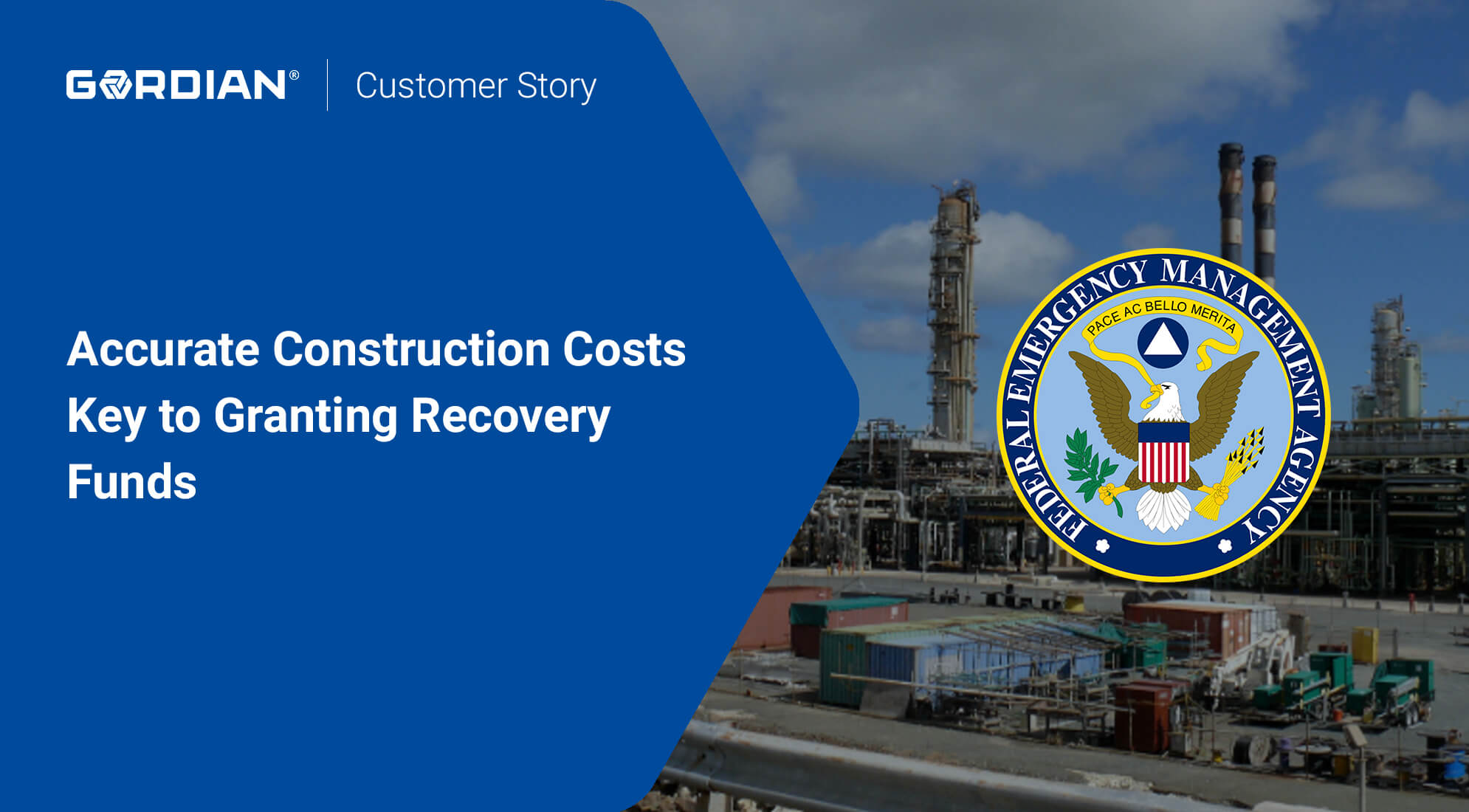
FEMA Estimates Hurricane Relief Projects with RSMeans data
Hurricanes causing $140+ billion in damage and losses
Rigorous cost research by Gordian engineers
A high-resolution recovery costs database for FEMA to grant aid
Challenge: FEMA Seeks Accurate Costs to Grant Recovery Funds
Hurricanes Irma and Maria devastated Puerto Rico and the U.S. Virgin Islands in 2017, causing widespread destruction of infrastructure systems. Homes, schools, hospitals and businesses were lost. Residents went without power for weeks. The National Oceanic and Atmospheric Association (NOAA) announced that the hurricanes were two of the costliest in history; Hurricane Maria resulted $90 billion in damage and Hurricane Irma accounted for $50 billion in losses.
Federal Emergency Management Agency (FEMA)’s mission is to support disaster recovery, and its Public Assistance Division manages the vast majority of recovery and mitigation grants to local government entities and nonprofits. But like all publicly-funded agencies, FEMA is expected to practice financial responsibility. The agency must make local communities whole after a disaster while being responsible stewards of taxpayer money, to do as much good with as little waste as possible. To meet that end, FEMA has long relied on Gordian’s RSMeans data as the backbone of their Cost Estimating Format – a standard method for estimating costs of eligible projects – to determine the scope and funding of its recovery efforts.
In recent years, FEMA has implemented numerous Business Process Improvement initiatives aimed at making the agency’s programs more efficient. These initiatives, informed by a McKinsey study, include a new Section 428 process, signed into law with the Sandy Recovery Improvement Act of 2013, allowing for alternative “block grant” type procedures for the quantification and management of grants to local government. This increased flexibility for localities in the use of funds but also introduced risk of cost escalation outstripping funding.
FEMA’s process relies heavily on accurate RSMeans Data unit prices and the RSMeans Online estimating program, but no unit price database existed for the US Virgin Islands, and the cost data for Puerto Rico was not granular enough for recovery program costing needs. On top of that, FEMA officials were concerned about overwhelming the local economies and construction workforce capacity with the volume of work needed, and they were aware that work in locations outside the contiguous U.S. (OCONUS), including remote islands, could entail unusual logistics costs.
To support FEMA and the entire disaster recovery community, Gordian looked for ways to enhance and add localized construction cost data for Puerto Rico and the U.S. Virgin Islands to the RSMeans database. Possessing more accurate costs would be key for baselining the funding of recovery projects with fully defensible information.
Gordian offers a suite of data, software and services to support FEMA and other Federal government project owners through every phase of the building lifecycle. From capital planning solutions to reliable construction costs for estimates through project delivery and performance benchmarking, we can help build and maintain the Federal facilities and infrastructure our country depends on. Click here to find out more.
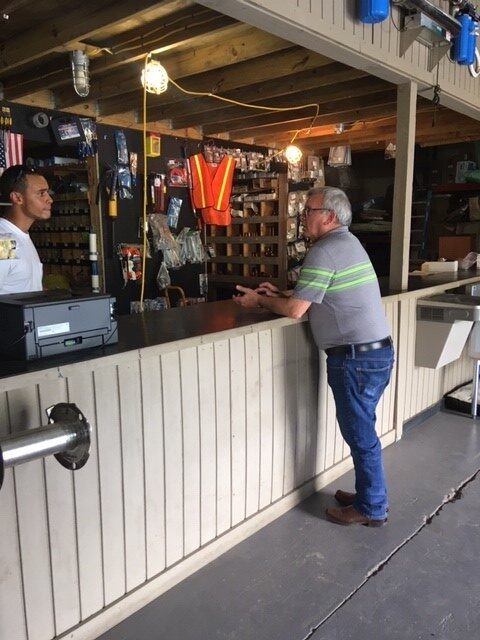
Solution: Gordian Investigates Local Construction Costs
Developing local construction costs was a multi-stage effort that took place over several months in 2018 and 2019. A team of Gordian cost engineers pounded the island pavement, crisscrossing Puerto Rico and its remote islands and then St. Thomas, St. Croix and St. John. They talked to suppliers, contractors, equipment rental shop owners and members of the local chapter of the American Institute of Architects (AIA), gathering information on current construction material, labor and equipment costs. Their detective work included a market study of how contractors and subcontractors actually work. All of that time gathering costs and learning about the local construction industry turned up some insights that informed the cost data development approach.
The mountainous terrain of the islands had a predictable effect on costs. That’s where the predictability ended. The hurricanes had dealt a major blow to island infrastructure. Roads were in poor shape and power lines were often in a state of disrepair. These conditions disrupted construction logistics, and that disruption impacted construction costs. The lack of skilled trades and trade specialization on the islands was a concern, and there was tremendous variation in labor rates and benefits between Puerto Rico and the other islands, and between the islands and the mainland U.S. Material availability was sufficient during the research period, but this was during a lull between immediate recovery cleanup and recovery construction work. Gordian’s researchers recognized that the work program could easily outstrip the availability of locally-produced materials and locally available equipment, and perhaps even port capacity for increasing availability. Additionally, alternative material procurement and logistics for large projects would likely impact costs.
Gordian’s research team used all these observations and insights, plus cost data points collected in alignment with rigorous research protocols, to develop a tailored methodology to localize and transform industry-standard RMeans data into a high-resolution recovery costs database. The team leveraged the proven RSMeans data City Cost Index process of collecting a representative market basket of weighted costs but modified the process for FEMA and island recovery needs.
Results: FEMA Possesses Firm Basis for Providing Aid Quickly
FEMA is now empowered with a highly accurate construction cost database of 80,000 unit line items and over 12,000 assembly models, presented to FEMA users in a familiar format, but with enhancements that streamline the estimation of challenging local construction cost elements. The database covers six distinct locations within the islands that have highly variable costs.
Gordian cost engineers were able to integrate contextual costs unique to the locations and circumstances — including modifications for local building conventions and benchmarked productivity and material logistics costs for remote locations, which will better support FEMA estimators in their work. Using St. Thomas as a base, Gordian found that the overall cost of construction tends to be 10% lower on St. Croix and 25-30% higher on St. John. Gordian is updating the data quarterly to help FEMA track ongoing costs and better understand post-disaster cost impacts of the surge in work.
A FEMA panel of engineers assessed several options in pricing out recovery work, and determined that the new RSMeans data recovery costs database would be the basis of fixed price estimates in conjunction with a Future Price Forecast (an economic model projecting construction costs for a ten-year span) to account for the potential impact of the large volume of work in the local island economy.
The custom cost database Gordian developed for each location were integrated into RSMeans Data Online, Gordian’s next-generation cloud estimating platform. FEMA adopted the platform as an enterprise solution for estimating in 2017, and has benefited from the easily scalable and collaborative system in this era of unprecedented disasters requiring a flexible workforce and work-from-home enablement . The cost data supports the more rapid and accurate development of estimates under the Cost Estimating Format.
As a result, FEMA can use objective, real-time cost data to use as a basis for recovery grants in volatile markets. Access to reliable data and a cloud-based construction estimating platform helps FEMA streamline their process for providing aid and reduces risk for the organizations rebuilding the islands impacted by Hurricanes Irma and Maria.
Share this:


